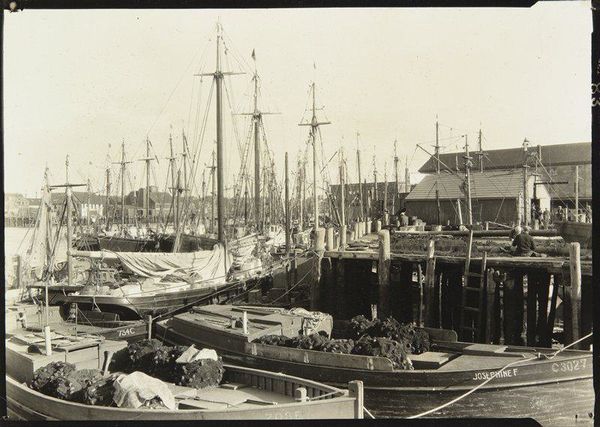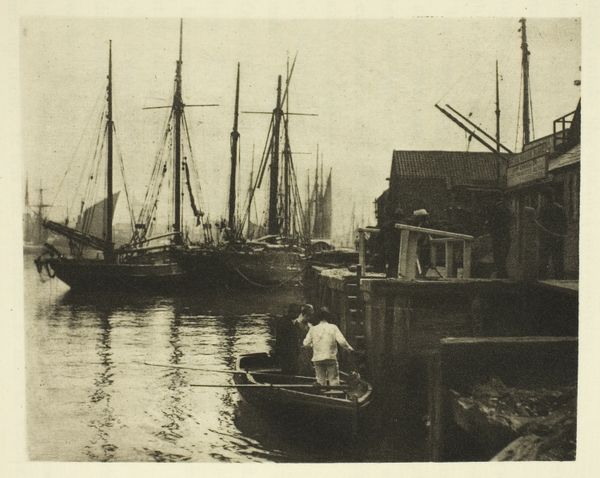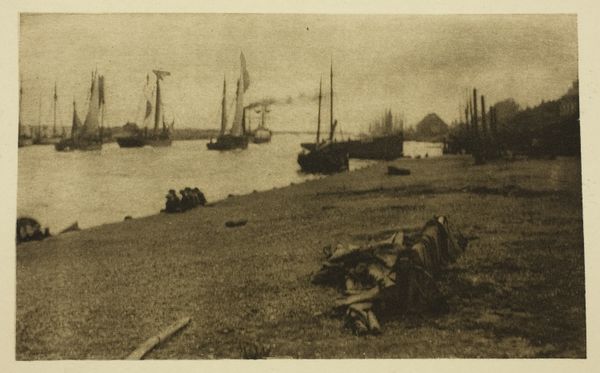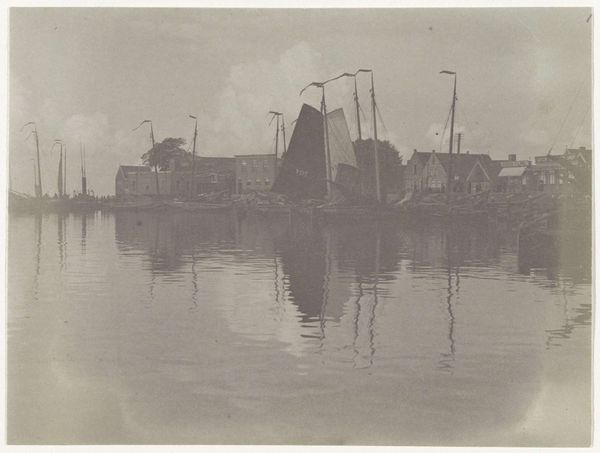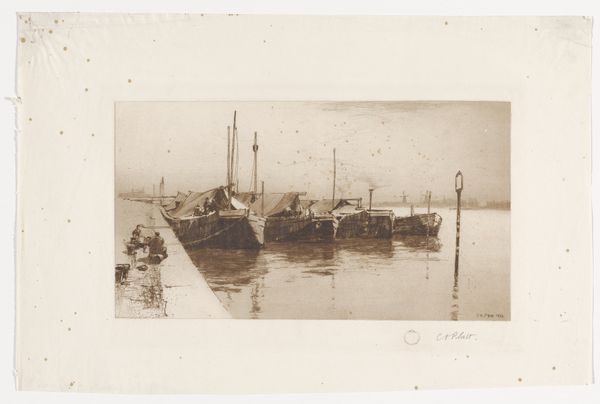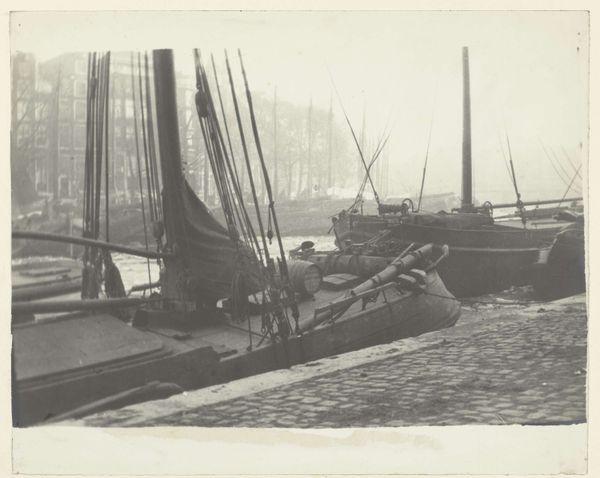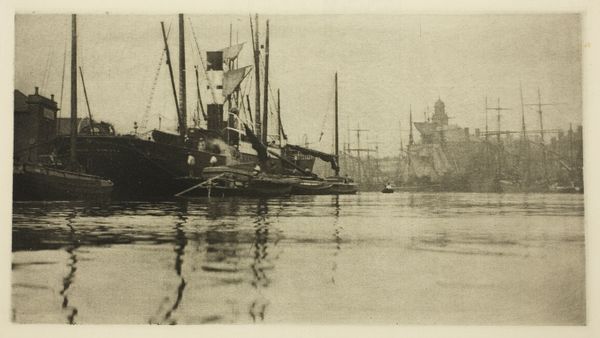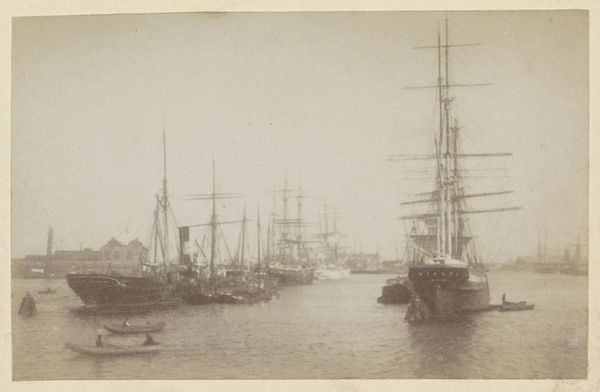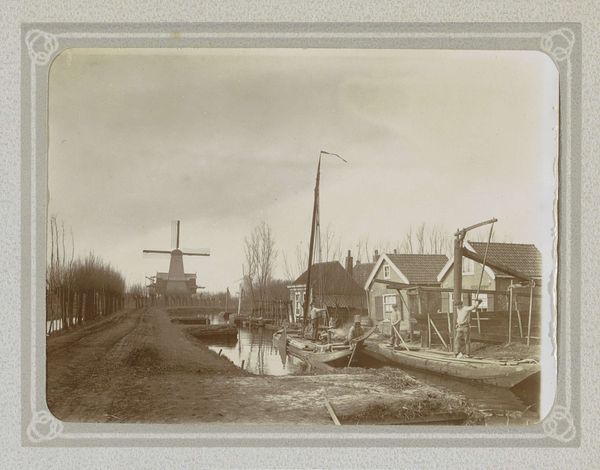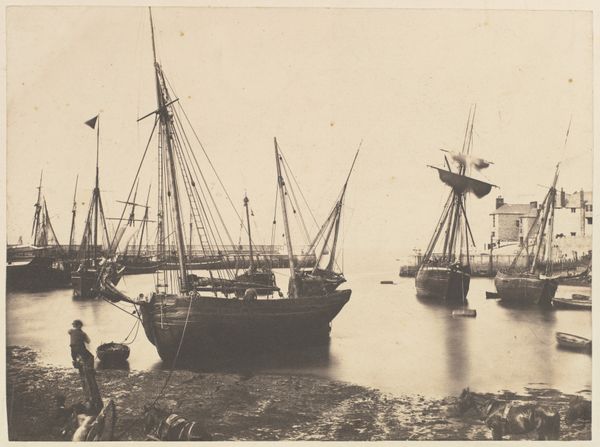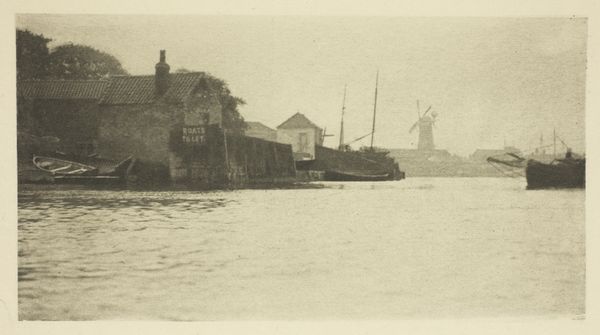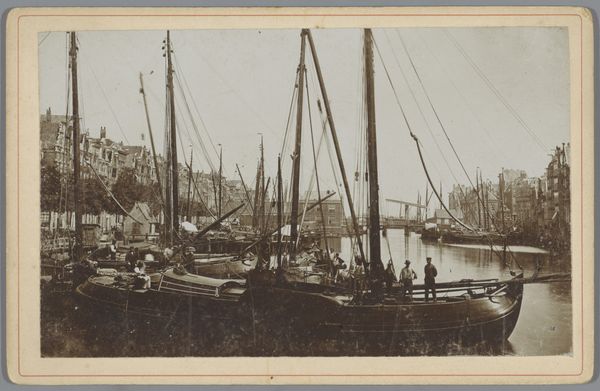
photography
#
16_19th-century
#
impressionism
#
landscape
#
photography
#
england
#
cityscape
Dimensions: 12.2 × 15 cm (image); 25 × 29.9 cm (paper)
Copyright: Public Domain
Curator: Peter Henry Emerson's photographic work "The Quays at Dinner-Time," created in 1887, offers a compelling glimpse into late 19th-century England. It's now held at the Art Institute of Chicago. Editor: Wow, the sepia tones give it such a moody, almost melancholic vibe, right? It feels like a moment suspended in time, like a half-remembered dream of a bustling port town. Curator: Indeed. Emerson’s work is pivotal. His approach, in stark contrast to pictorialist manipulation, was centered on capturing naturalistic scenes—informed, in part, by Impressionistic landscape painting popular at the time. He felt photography should honestly reflect lived experiences, capturing social dynamics, class, and regional identities of everyday England. The focus on maritime laborers is especially key to consider in terms of their class, status, and gender in Victorian England. Editor: I get that. The sharp focus on the foreground elements, the ropes and weathered wood, draws my eye immediately. But beyond that is such lovely diffusion. And there’s the daily life, look, there’s the suggestion of children, maybe workers and families. Curator: Emerson considered himself an artistic photographer rather than a documentarian. The tonalist effect and composition, as you mention, elevate a commonplace scene into art. He aimed for what he termed 'naturalistic photography' emphasizing the need for artistic vision to be grounded in genuine observation rather than forced artifice. You can see that in the attention to light, even in a seemingly overcast day. Editor: The tall masts fade off in the distance. I wonder, did Emerson mean to invoke any sort of feeling of the unknown, the vastness of life, you know, ships heading off to new adventures? It just pulls at your imagination, really makes you wonder about the lives connected to those vessels. Curator: I think Emerson aimed for a balance of naturalistic realism and painterly romanticism in that regard. His theoretical framework positioned his style apart from contemporary, academic viewpoints. His commitment to representing England through these specific scenes becomes a social, cultural, and arguably political commentary about regional identities, economic struggles, and overlooked working-class communities. Editor: You are right, that contextual understanding really shifts how one experiences the photograph. I was off daydreaming, now I see the purpose. Thanks! Curator: Thank you. Context offers richer meaning, and hopefully prompts questions about those we view, and ourselves.
Comments
No comments
Be the first to comment and join the conversation on the ultimate creative platform.
